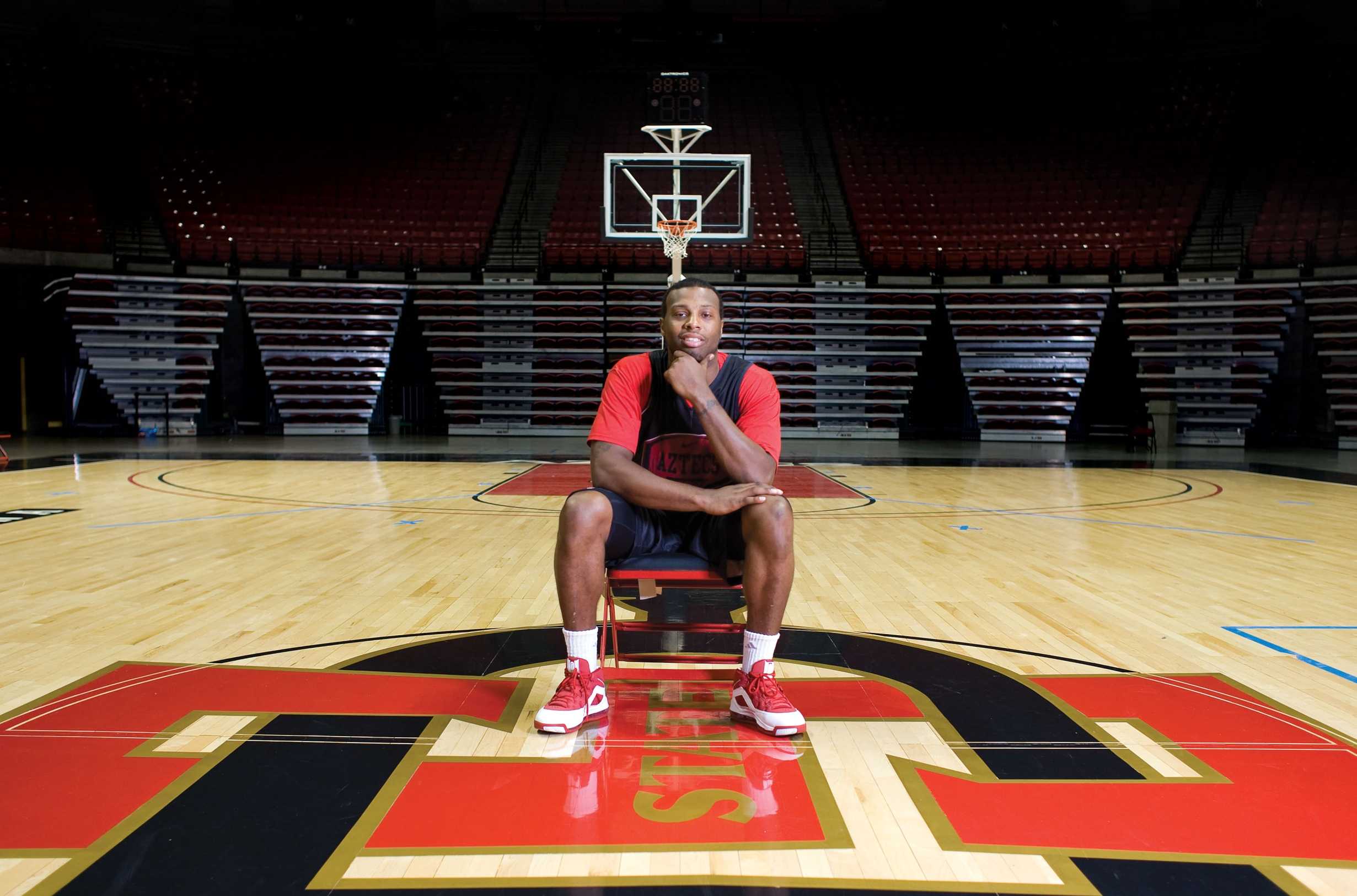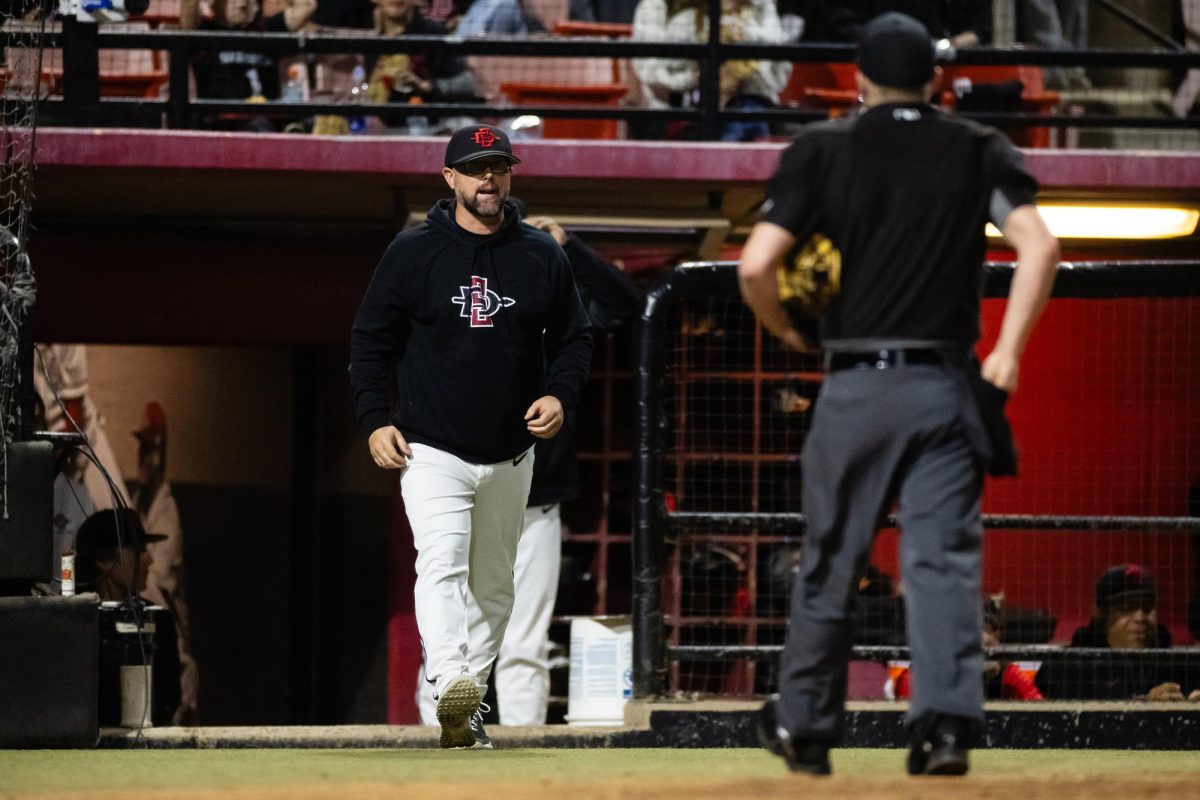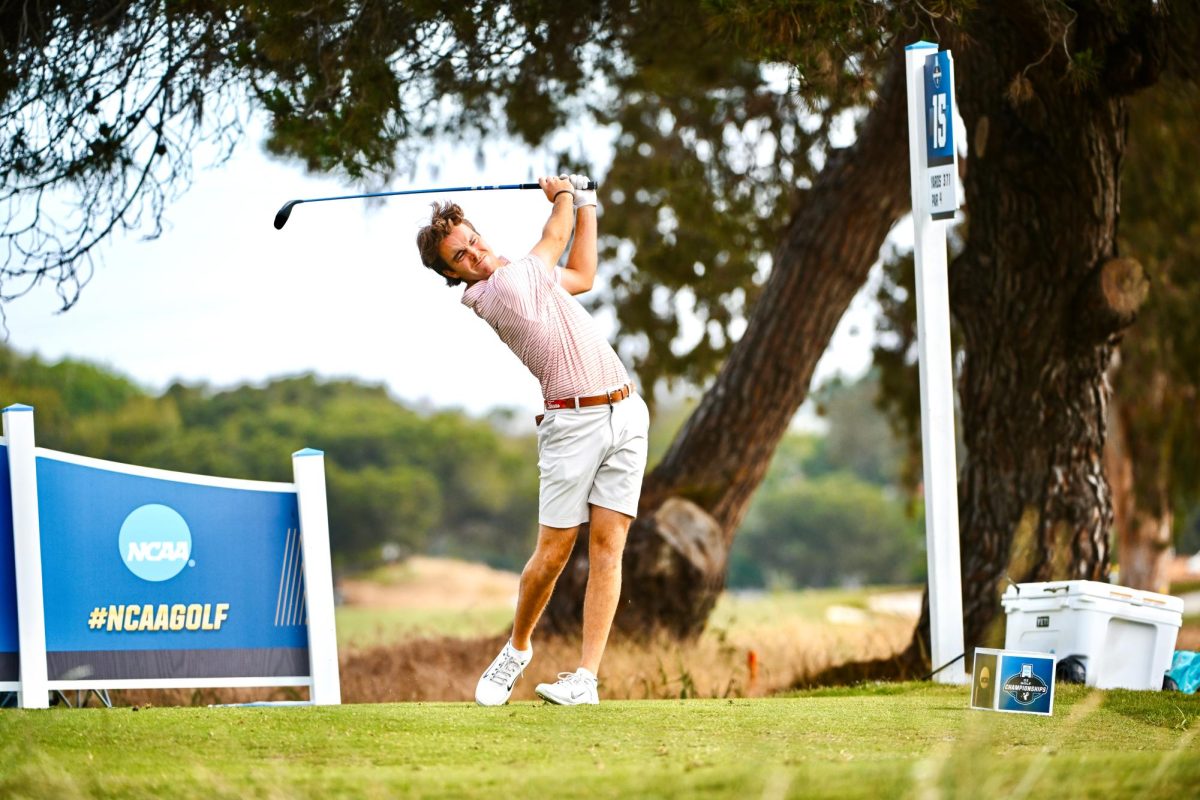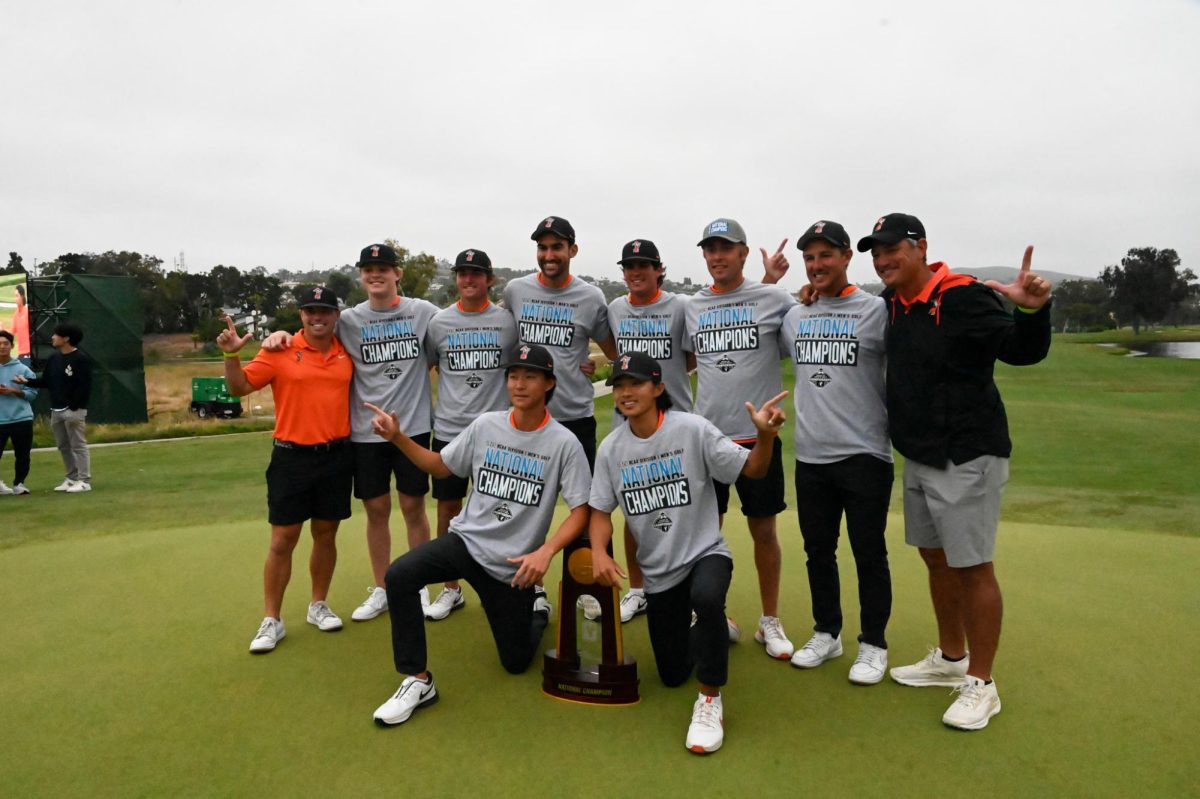 Andrew Huse / Staff Photographer
Andrew Huse / Staff PhotographerIt’s nearing 8 a.m. and Kelvin Davis is already tired.
He knows what today entails &- a four-hour visit to the doctor’s office that will be filled with needles and medication.
But he wills himself out of bed, gets dressed and heads to the hospital.
It’s a place the San Diego State men’s basketball guard has visited too many times in the past two months. For several weeks, Davis has been poked and prodded and today promises to be no different.
When he arrives, his doctors tell him about his progress, no matter how slow or steady it is. They lead him to a room with several La-Z-Boys and nurses to administer the chemotherapy to treat his cancer.
He takes his injections through a port in his chest and he sits and waits.
Two months before Kelvin Davis started his chemotherapy sessions, his body had let him down. It was 20 games into the basketball season, though, so it had to be the daily grind taking a toll on the then junior.
At least that’s what the team thought.
“It’s a situation that every player goes through,” head coach Steve Fisher said. “Sometimes you have spells where you play well and sometimes you have spells where you don’t. We thought he was going through one where he wasn’t playing well and that was affecting his effort. But it turned out to be a lot more.”
Davis was reluctant to complain and thought his fatigue might have stemmed from his poor diet. He kept pushing but his playing time kept dipping. There were nights in March when he played as little as seven minutes. He went from averaging 10.9 points per game in November and December to a mere 5.1 in the final three months of the season.
“I had to take myself out,” Davis said. “I was getting so tired so quickly and I never knew why.”
Something was seriously wrong with Davis. His neck had swollen and he couldn’t physically turn left.
“If you said something to me I had to turn (to the right),” Davis said. “Nobody ever noticed it because I never brought it to attention. If somebody’s limping you could see it, but they couldn’t notice something like that.”
Davis played in the Mountain West Conference Tournament, logging four points in SDSU’s two games. After the team’s loss in the conference semifinals, Davis told doctors of his troubles. The results of the ensuing tests were disturbing.
“They said my blood count was really low and they were surprised I was still functioning,” said Davis, who was at the hospital for nearly two full days to try and diagnose the problem. “My white cells were high and my red cells were low, and they were twice as low as a normal person’s.”
In mid-March, Davis found out exactly what it was.
Cancer.
Neck surgery showed Davis had Hodgkin’s lymphoma; the fatigue-causing disease that results in the enlargement of lymph nodes and immune tissues. Following surgery, though, the illness was the least of Davis’ problems.
“After surgery, blood went in my lungs and I was spitting up blood,” Davis said. “I didn’t know what was wrong with me. I was supposed to be in and out; have surgery, find out what I had and leave. I was in the hospital for a week.”
When Davis finally left the hospital, the journey back to the court, and more importantly, full health, had begun. Considered one of the most curable forms of cancer by the American Cancer Society, Hodgkin’s has a one-year relative survival rate of nearly 92 percent. According to the ACS, by 2004, more than 138,000 people had been affected by the disease and survived.
While these statistics were encouraging to Davis, it didn’t make the chemotherapy sessions any more pleasant. Injections delivered through a chest port were not only painful, but physically draining. Davis recalled times when he would come home from a treatment and just crash.
“The first couple of days, it’s terrible,” Davis said.
The treatments numbed his taste buds, making it difficult for the 6-foot-3-inch, 215-pound senior to eat.
“I felt bad,” Davis said. “But I was just happy that I had that. It made me think like, “I got that, well I’d rather have that than be dying or something.'”
After several months of chemotherapy, Davis started to regain the life cancer took from him. While he admits his endurance is still not where he’d like it to be, he’s back out on the court competing with his teammates.
“I didn’t think he’d be able to practice at this stage but he wants to be here and we’ve been told by the doctors that this is good for him and we’re happy to have him,” Fisher said. “It’s a mental thing. If he thinks he can be out here he’s thinking, “Hey, I’ve got this thing under control.’ The doctors feel that’s healthy for him.”
While Davis may be in a fight for his health, on the basketball floor it’s difficult to tell who has the disease. When the team is forced to run wind sprints, Davis is the first one to cross the finish line. When his team needs two points, it’s Davis putting up the runner in the lane.
“It puts a premium on the truly important values of life,” Fisher said. “You complain about all of the little things and you see what’s happened to him and how he’s fought it and fought it and fought it and it tells you that life is pretty good. He’s always got a smile on his face and he’s been good for everybody.”
Against Point Loma Nazarene on Tuesday night, Davis played for the first time since his diagnosis in April. He logged 11 minutes and recorded a rebound and an assist. Despite his 0-4 shooting night, Davis couldn’t have been happier to be back on the court.
“You watch guys in the NBA and it makes you want it even more,” Davis said. “It makes you realize that any day it could get taken away from you. Don’t take it for granted and just go out there and play hard every day.”






